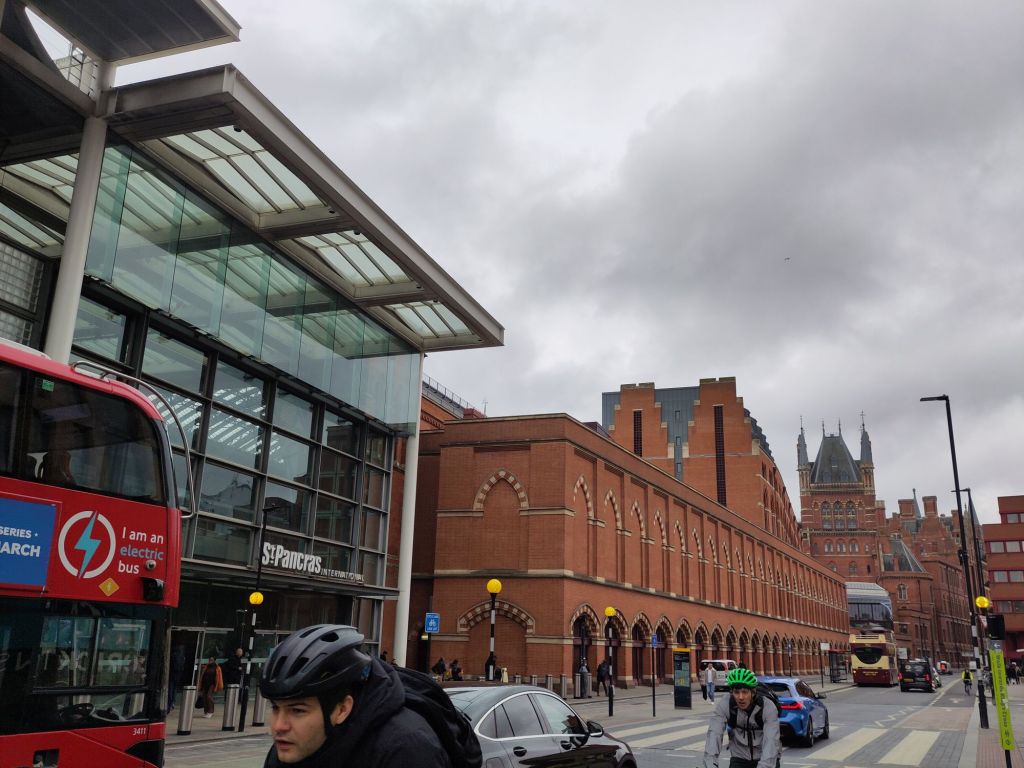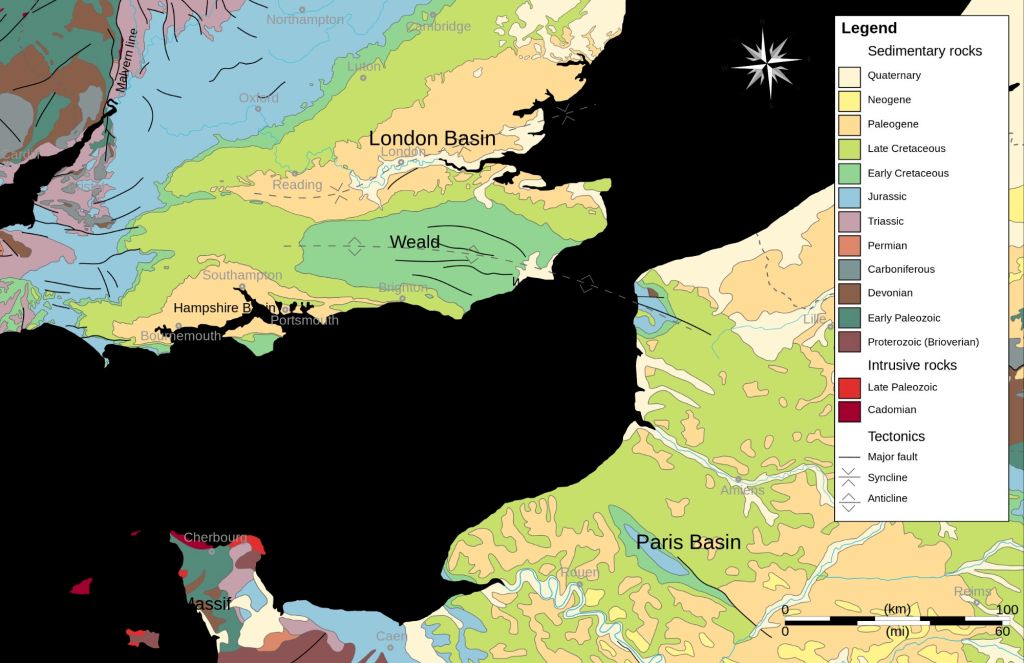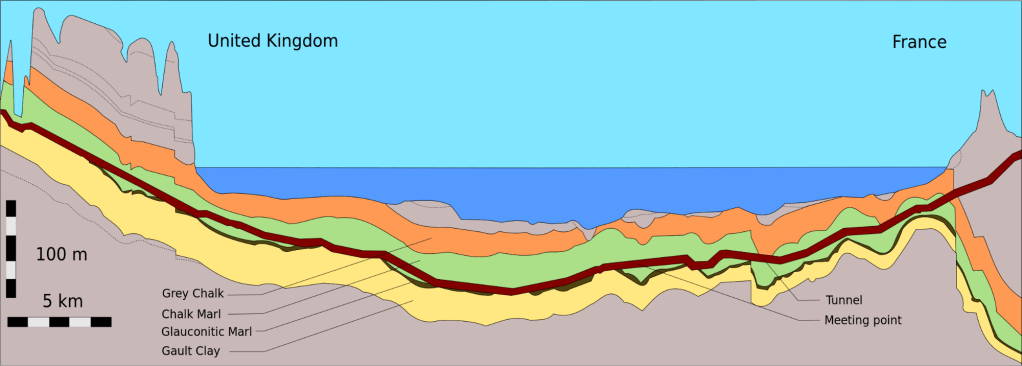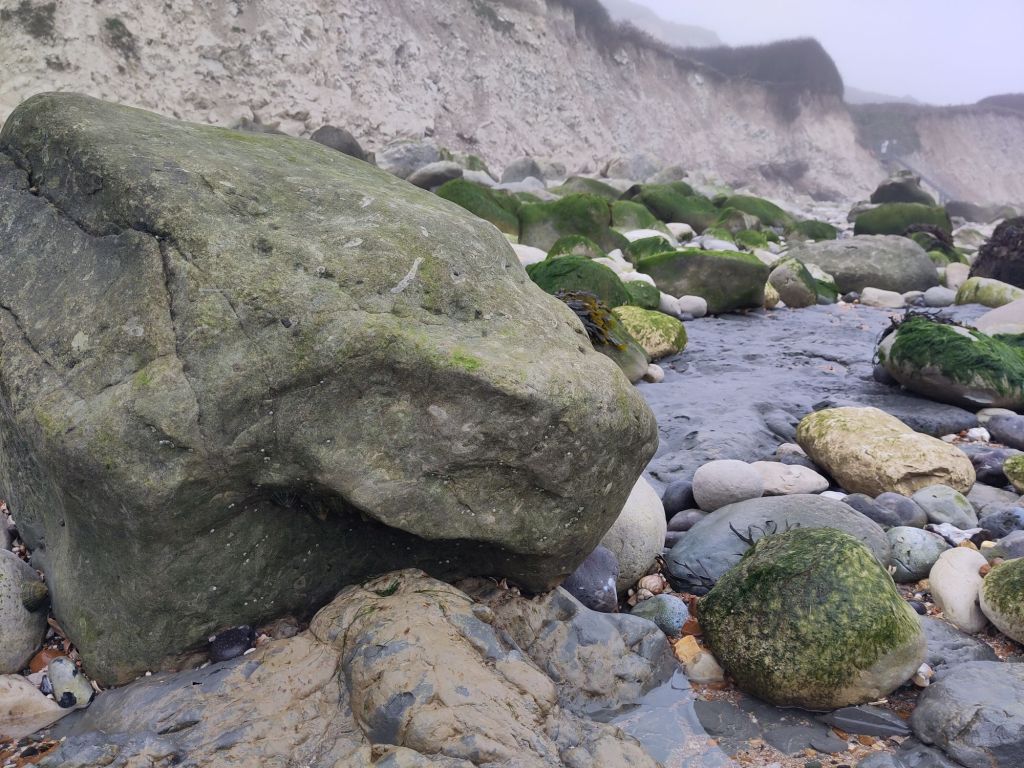
I don’t know if any readers have travelled by Eurostar train from St Pancras International to France. My experience was perhaps a useful one. It helped me on my way to becoming a vegan – I now have a better idea of what it is like being treated like cattle. The staff were polite and well meaning but they had a job to do – herding us through customs and onto the train.

Once we got going I could think more about the geology of our journey. London is famous for its clay, which sits on top of – you guessed it – chalk! London clay fills a basin. My earlier train from Brighton to London passed through strata that had been lifted up like an up-turned pudding basin. They then dipped downwards to form a basin called the London Basin, with chalk underneath and filled with clay – like a lid-less pie.

Approaching Folkestone (on the boundary between the white – chalk – cliffs of Dover and the Wealden sandstones and clays) the train dipped down and disappeared underground. For most passengers this, the longest undersea tunnel in the world, is a just a boring journey in a plastic and metal box on wheels in the dark. If only they knew!
The Channel (La Manche) is – like London – sits on top of a basin filled with sea water instead of clay. Chalk is a relatively soft rock, but it contains a very hard glassy mineral called flint (a variety of quartz). This would have damaged their drilling machines. Fortunately for the engineers the very lowest layers of chalk are flint free.

These lowest layers of chalk are exposed to view at Cow Gap, which I recently visited (two excellent guides to its geology and fossils are here and here). The shiny grey coloured rock in my photograph is the underlying gault clay. The green(ish) coloured boulder is upper greensand sandstone which is missing further east near Folkestone. It is replaced by glauconitic marl. Chalk marl and the grey chalk can be seen in the my photo in the cliffs behind.
Because these layers have been disturbed by tectonic forces (directly experienced by us as earthquakes) they are not horizontal. Nor do they gently rise and fall like the contours of a wide shallow bowl. I wasn’t able to feel it, but our journey under the channel was in actuality more like a gentle rollercoaster – forced to follow wherever the geological strata took us.
I wish they had a three-dimensional geological map showing us our progress 🙂
<- Chalk 2 | Chalk: 4. Paris Basin and Il pendulo di Foucault ->
3 replies on “Chalk: 3. Tunnel Sous La Manche”
[…] <- Chalk: 1 | Chalk: 3. Tunnel Sous La Manche -> […]
[…]
[…] London, uplifting the South and North Downs and lowering the London Basin (see Chalk 1, Chalk 2, Chalk 3 and Chalk 4) as well as other ranges of hills and […]